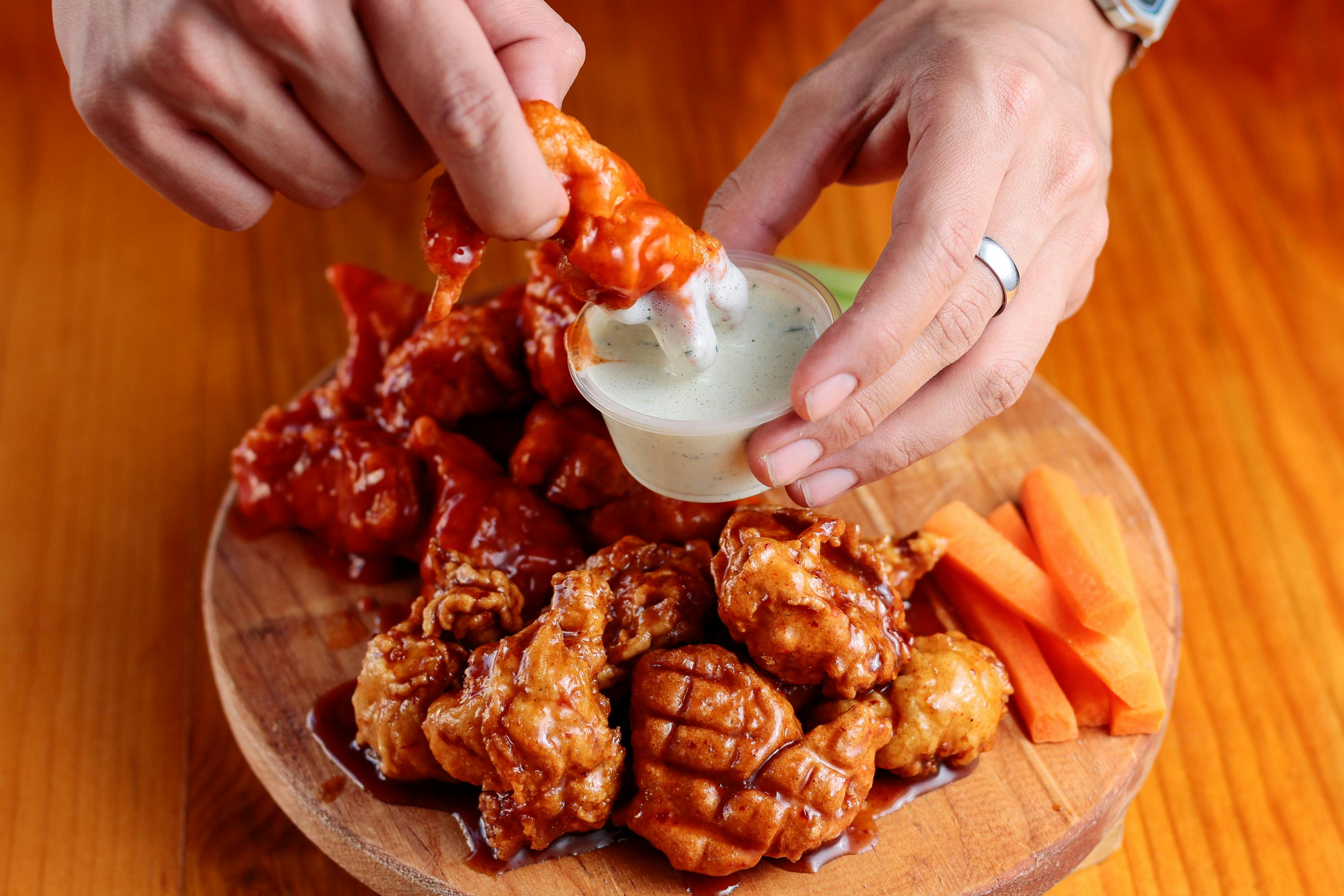Image Credits: twitter.com/StationCDRKellyThe bountiful harvest aboard the International Space Station is part of Nasa’s Veggie experiment to make spacecrafts more self-sustaining for longer missions.It was one small bite for man, one giant meal for mankind.
On a gustatory adventure never attempted by humanity, astronauts have for the first time dined on a harvest sown in space. The verdict from astronaut Scott Kelly: "Tastes good. Kinda like arugula." It was a strangely appropriate comment, given that arugula is also known as rocket.
Kelly was one of three American astronauts who tried lettuce grown on board the International Space Station as part of a Nasa experiment on Monday.
The crew members of Expedition 44 harvested space-grown red romaine lettuce heads on Monday. They first cleaned them with sanitizing wipes, then tried them raw, then dressed the roughage with a bit of extra virgin olive oil and Italian balsamic vinegar.
"If we're ever going to go to Mars someday, and we will," Kelly said, "we're going to need a spacecraft that is much more sustainable.
"Having the ability for us to grow our own food is a big step in that direction."
Kelly activated the seeds in the production bay and rooting "pillows" " chambers of clay, fertilizer and water " on 8 July, more than a year after the seeds were launched into orbit.
The experiment, officially called Veg-01 but nicknamed Veggie by Nasa, is meant to study plant growth in a micro-gravity environment and to improve the methods that could grow produce in orbit.
"Growing food will be critical to future long-duration spaceflight," Nasa's Tabatha Thompson told the Guardian. "So this is an important experiment not just for life on the space station but also for future deep space missions on our journey to Mars."
Nasa performed an earlier version of the Veggie experiment last year, after which the astronauts brought plants back to Earth for analysis.
Those plants were "as clean if not cleaner" than grocery store fare, said Nasa spokesperson Stephanie Schierholz, leading to the current experiment. The astronauts will package up half the plants and freeze them for a return to the planet for testing.
Schierholz said the experiment will help Nasa break free from the limits of necessary resupply flights, which become increasingly difficult " if not impossible " as missions venture farther from Earth. Astronauts on the ISS usually have about six months' worth of food at a given time; gardens could make a spacecraft relatively self-sustaining.
"The more independent we can get from the need to save supplies, the greater we can explore," she said.
Fresh foods could provide valuable health benefits for astronauts who otherwise rely on packaged goods that can endure the stressful conditions of space. Tomatoes and red lettuce provide antioxidants, for instance, and Ray Wheeler, a Nasa life support researcher, said that the benefits could keep astronauts healthier and happier in space.
"Having fresh food like these available in space could have a positive impact on people's moods and also could provide some protection against radiation in space," Wheeler said in a statement.
There is also a psychological benefit, Schierholz said. "They don't have a grocery store to get an apple or fresh fruit," and the vegetables are a welcome reminder of unpackaged food from home.
Nasa has gone out of its way to make the food look more familiar, using green LEDs as well as more efficient red and blue ones in order to make the lettuce turn more green and less red than it otherwise would do.
"We could more efficiently grow them without the green LEDs," Schierholz said, "but the green actually gives it psychological benefit of eating a food that looks familiar versus food that looks weird."
Astronauts have said that taste changes in space, at least for the first few days in orbit when the body is struggling to adjust to its new conditions in gravity. In 2013 astronaut Chris Hadfield explained that blood flowing to the head, rather than down to the feet, caused congestion and clogged sinuses, blunting scents and flavors to the point of tastelessness.
More important to astronauts, especially Kelly and Kornienko, who have lived on the station for 135 days, may simply be the variety of fresh food. Trapped in the space station, astronauts have said that they found themselves preferring spicier and stranger flavors " like wasabi or Russian cottage cheese " over familiar comfort foods like cookies and pasta.
Gardening could even be a hobby for astronauts with an interest in botany, or at least an activity to stave off the psychological stress of an extended journey in the tight quarters of spaceflight. Crew members of the ISS receive fresh fruits and supplies with every payload from the Earth, but have to consume the produce quickly.
"The farther and longer humans go away from Earth, the greater the need to be able to grow plants for food, atmosphere recycling and psychological benefits," Nasa payload scientist Giola Massa said in a statement.
In the early days of the Veggie experiment almost three years ago, Massa said that simply having plants around the space module made astronauts feel more at home.
"Based upon anecdotal evidence, crews report that having plants around was very comforting and helped them feel less out of touch with Earth," Massa said. "You could also think of plants as pets. The crew just likes to nurture them."
Improving the expandable Veggie scaffold, about the size of a stovetop, could also help agriculture on Earth, Nasa argues, by making it possible to grow plants in efficient, vertical "plant factories" that maximize available light and water.











